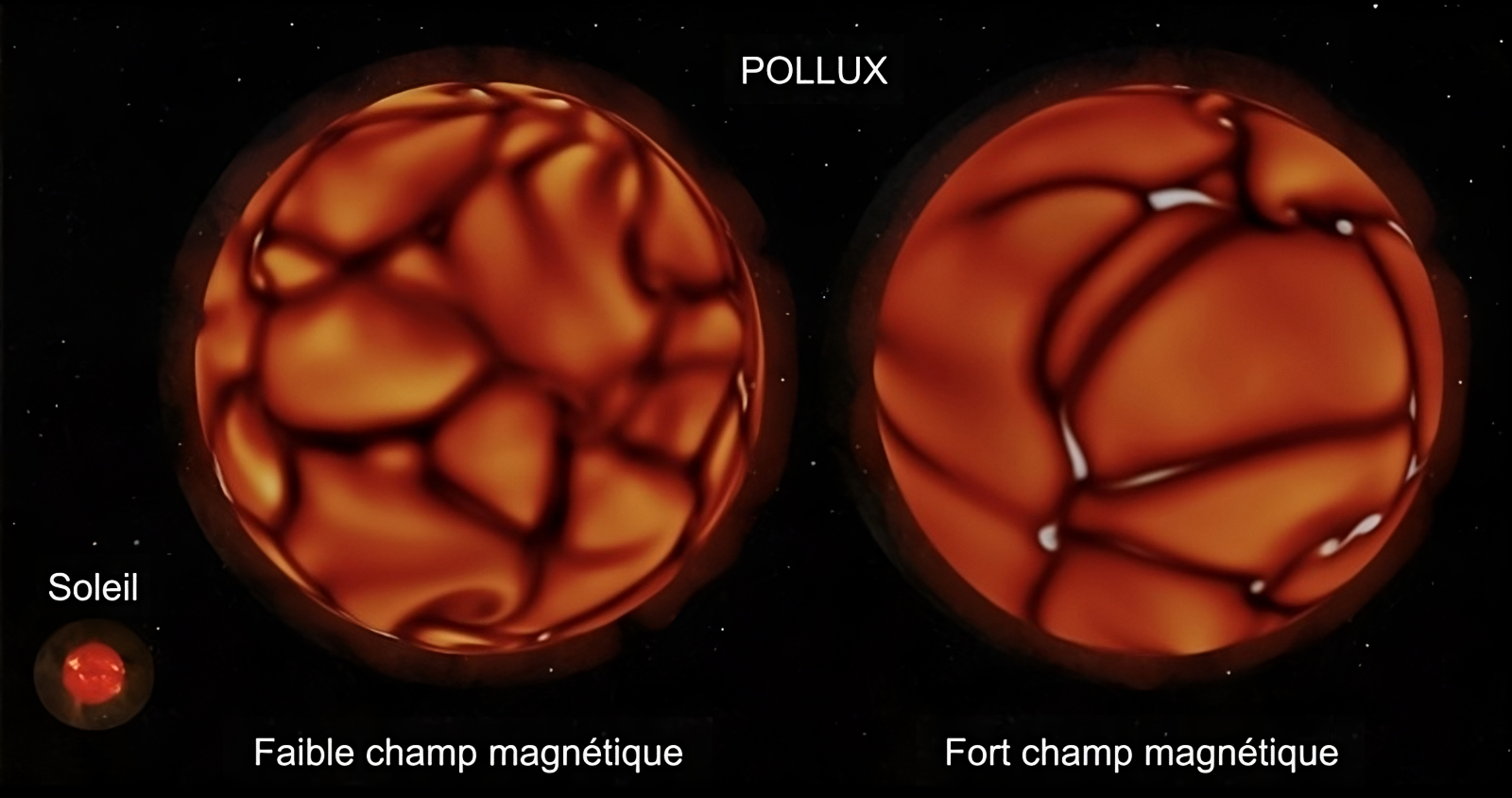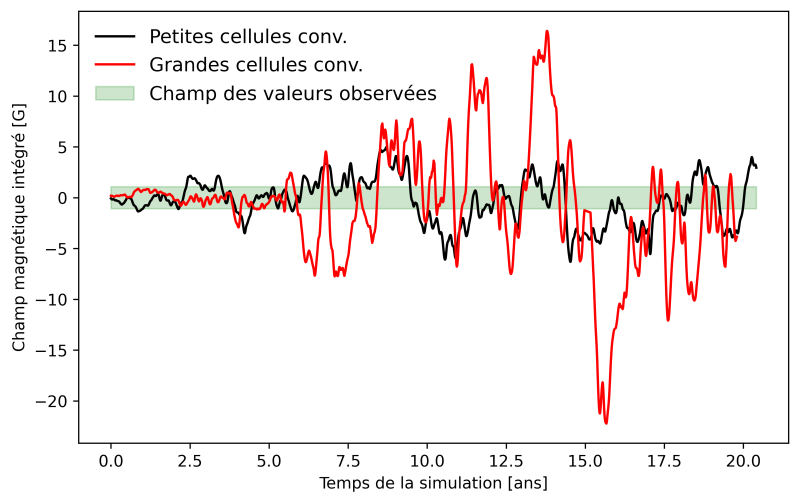Follow us on Google News (click on ☆)

Visual rendering of digital data from the two simulations, compared on the left with the Sun to scale.
© L. Amard, A.S. Brun, A. Palacios, A. Finley
The giant star Pollux is a good example of what our star will become and shows a magnetic field much weaker than the Sun, below 1 Gauss. Its extended envelope and very slow rotation generate a dynamo different from the solar case. In particular, the small-scale convective cells allow the generation of a magnetic field comparable to observations.
To better understand the magnetism of giant stars, scientists conducted advanced numerical simulations of a star similar to the giant Pollux, in a CNRS Earth & Universe laboratory. These simulations have highlighted the reason why the dynamo in the extended envelope of this star generates magnetic fields 2 to 3 times weaker than those of the Sun.
Thus, according to the simulated parameters, between 2 and 8% of the plasma's kinetic energy is converted into magnetic energy depending on the size of the convective cells at the source of the dynamo: small cells produce more complex and less intense fields because the correlation between magnetic and convective structures is weaker on large scales.
Another notable discovery is the possibility that Pollux's magnetic field reverses its polarity over several years, similar to the Sun. Although these reversals have not yet been observed, simulations suggest they could be detected if the star were monitored over a longer period.

Evolution of the integrated magnetic field at the visible surface of two of the simulations in black and red. The green band indicates the range covered by observed values.
© L. Amard, A.S. Brun, A. Palacios
This study enhances our understanding of the magnetism of giant stars and opens new perspectives for the ESA PLATO mission, by characterizing the magnetic activity of stars and its impact on exoplanets.
References:
L. Amard et al., Understanding Post-main-sequence Stellar Magnetism: On the Origin of Pollux's Weak Surface Magnetic Field, 2024 ApJ 974 311.
The CEA-IRFU press release